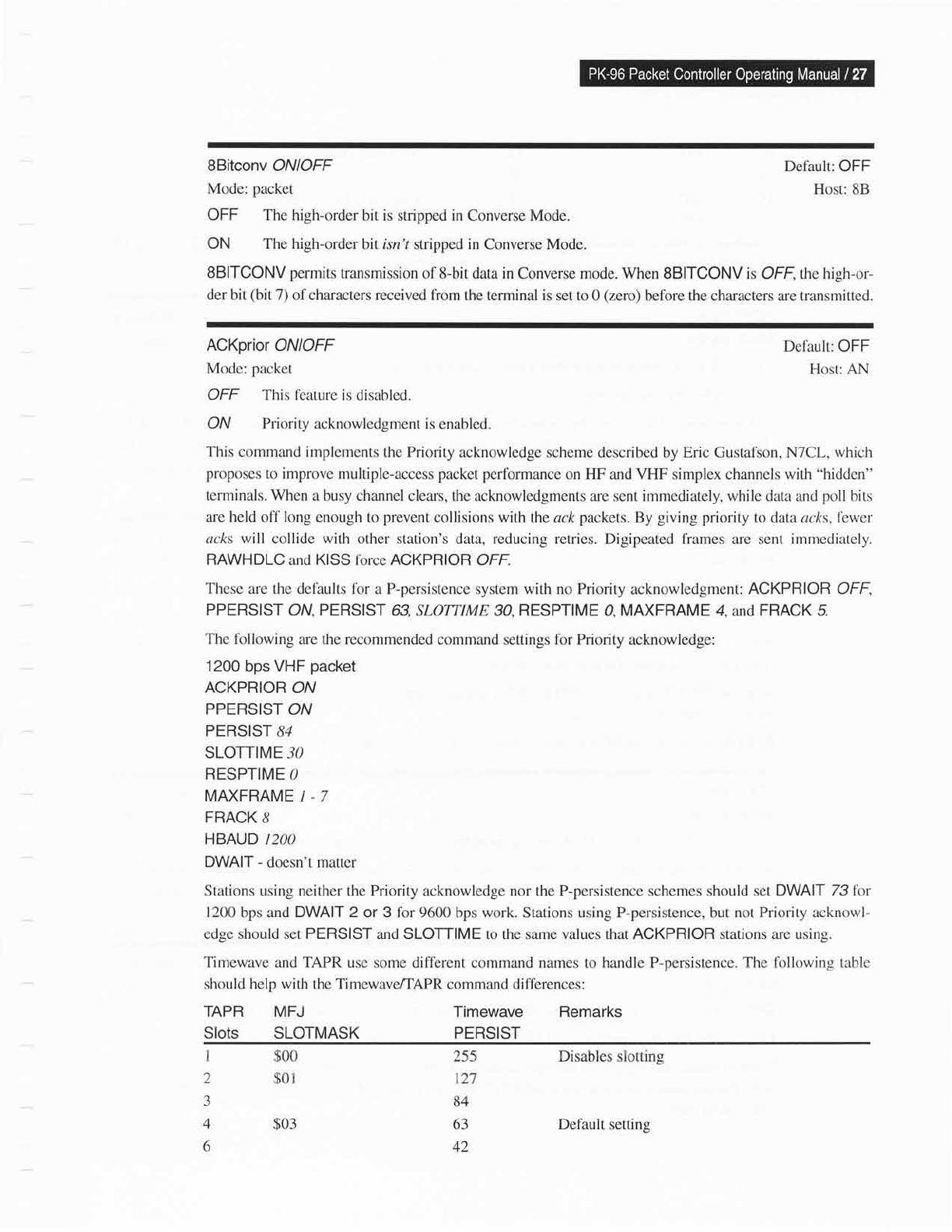Specifications
Table Of Contents

8Bitconv ONIOFF
Mode:
packet
OFF
The
high-order bit is stripped in
Converse Mode.
ON The high-order
bit isn't stripped
in Converse Mode.
SBITCONV
permits
transmission of 8-bit
data in Converse mode. When SBITCONV is OFF, the high-or-
der bit
(bit
7)
of characters received from
the terminal is set to 0
(zero)
before
the characters
are transmitted.
ACKprior ONIOFF
Mode:
packet
OFF This f'eature
is disabled.
ON
Priority
acknowledgment is
enabled.
This
command implements the Priority
acknowledge scheme described
by
Eric
Gustafson,
N7CL, which
proposes
to improve multiple-access packet performance
on HF
and
VHF
simplex channels
with "hidden"
terminals. When
a busy channel clears, the acknowledgments
are sent immediately,
while
data and
poll
bits
are held off long enough
to
prevent
collisions with the
ack
packets.
By
giving priority
to data acks,
f'ewer
ncks will collide with
other station's data, reducing retries. Digipeated frames are sent immediately.
RAWHDLC and KISS
fbrce ACKPRIOR OFF.
These
are the defaults for
a
P-persistence
system with no Priority acknowledgment:
ACKPRIOR
OFF,
PPERSIST
ON, PERSIST
63, SLOTTIME 30, RESPTIME o, MAXFRAME 4, and FRACK 5.
The following
are the recommended command
settings
for Priority
acknowledge:
1200 bps VHF
packet
ACKPRIOR
ON
PPERSIST
ON
PERSIST
84
SLOTTIME 30
RESPTIME
O
MAXFRAME 1 -
7
FRACK 8
HtsAUD 12OO
DWAIT
-
doesn't matter
Stations using neither
the
Priority
acknowledge
nor
the
P-persistence
schemes
should set DWAIT Z3
for
1200 bps and DWAIT 2
or 3
for
9600 bps
work.
Stations using P-persistence, but
not Priority acknowl-
edge should set PERSIST and SLOTTIME
to the same
values
that
ACKPRIOR stations are using.
Timewave
and TAPR use some different
command
names
to
handle P-persistence. The followins taLlle
should helo with
the Timewave/TAPR command differences:
Default: OFF
Host: 88
Default: OFF
Host: AN
TAPR MFJ
Slots SLOTMASK
Timewave Remarks
PERSIST
I
2
3
4
6
$00
$ol
$03
255
121
84
63
A'
Disables
slotting
Default setting










